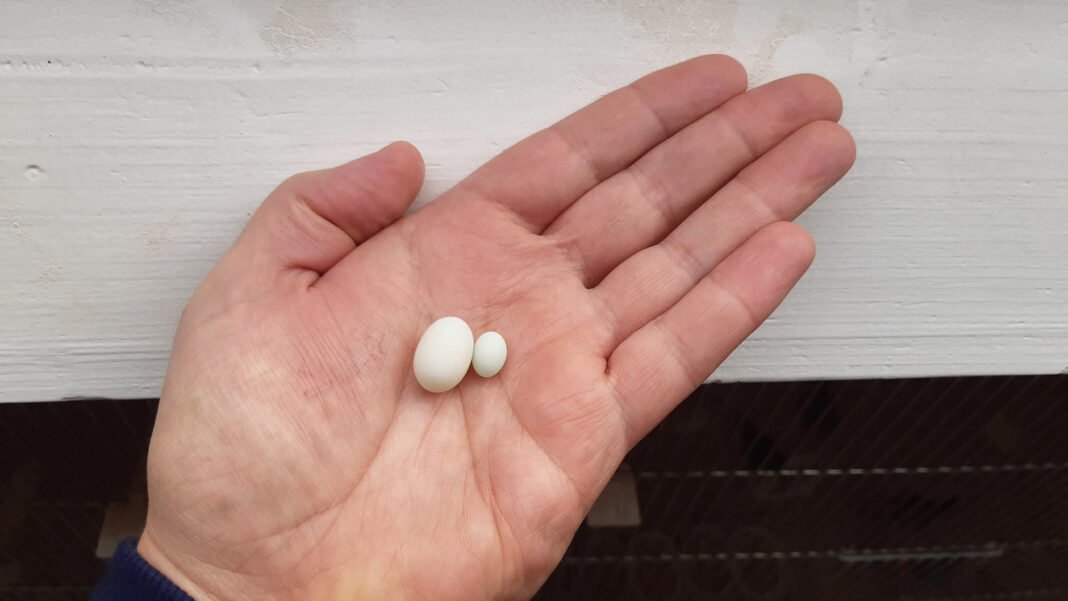With many birds already breeding, a range of factors may get in the way of successful hatchings. DAVE BROWN pinpoints some of the most regularly encountered challenges.
I can well remember one of the first bird-club talks I ever attended. It was by the late Tony Roke, a dedicated Border canary man. Tony made a quip about how often a budgie man wouldn’t want to listen to a canary man and vice versa, on the grounds that budgies and canaries were outwardly quite different types of birds. Tony then used the line: “But at the end of the day, they all lay eggs!”
Tony was of course quite right. Even when birds may look physically different, the principles regarding their eggs are shared. These unfortunately include some of the problems a fancier may experience with clutches of eggs during the breeding season.
Addled eggs
These are the result of a fertilised egg being chilled or infected by disease. When candled, addled eggs will be cream or grey in appearance and there will be no sign of the rich red blood vessels or developing embryo.
When eggs become chilled, it is usually down to the breeding pair in some way. They may have left the nest for an extended period. Perhaps the hen was scared from it in the night. The other factor – disease – can to a large extent be prevented by good management on the fancier’s part. Make sure all of the cages, and nest-boxes, and the birds themselves, are clean. That will reduce the risk of bacteria permeating the porous eggshell. Preferably, avoid handling the eggs, but if you do, first rub your hands in an antibacterial gel, again to cut down the chances of bacteria entering the shell when you are handling the eggs.
I’ve known fanciers to remove eggs from the nest and hold them up to a bulb to establish whether they are fertile or not. Using a torch pen that can be shone onto the eggs while they are undisturbed in the box or pan is a far better approach.
Oversize and undersize
On occasion, hens will lay extra large eggs. They can be either single- or double-yolked. In both scenarios such eggs usually fail to hatch. Double yolkers can have two embryos develop to quite an advanced stage, but it is rare for them to hatch. Undersized eggs are rarely fertile and the shell will often appear chalky and porous.
Eggs thrown out
If you notice eggs on the cage floor, there are various possible explanations. Their presence there may be either accidental or deliberate. First, the hen may lay outside of the nest-box, through inexperience or simply a preference for a corner of the cage over the box.
Alternatively, if she lays the eggs in the appropriate box or pan and they are then thrown out, it could be because the hen knows that her eggs are beyond the normal incubation time and decides she has had enough. A hen may already have had a round or two and think “right – that’s my lot, thank you.” A word to the wise here. There is no merit in overbreeding your birds. It often ends in disappointment.
In a different scenario, the cock of the pair may be over-fit or keen to breed again, which explains why he punctures the eggs with his beak and lifts them out. Again, if the fancier has paired a new cock to a breeding hen, the cock may conclude that the eggs have been laid too quickly and eject them, instinctively trying to ensure that it’s his genes that are passed on.
Dead-in-shell
In perhaps the most frustrating scenario, the chick dies during its struggle to emerge from the egg. A high percentage of dead-in-shell cases can be attributed to a natural weakness in the chick. Low humidity in periods of hot weather can also be a cause. If there isn’t enough moisture in the air, the membrane surrounding the chick may harden so that the emerging chick has insufficient strength to cut through. In many cases, it will die unless the fancier helps it out of the egg while inspecting the nest.
Find more news and articles like this on the Cage & Aviary Birds website. Subscribe to Cage & Aviary Birds magazine now.


